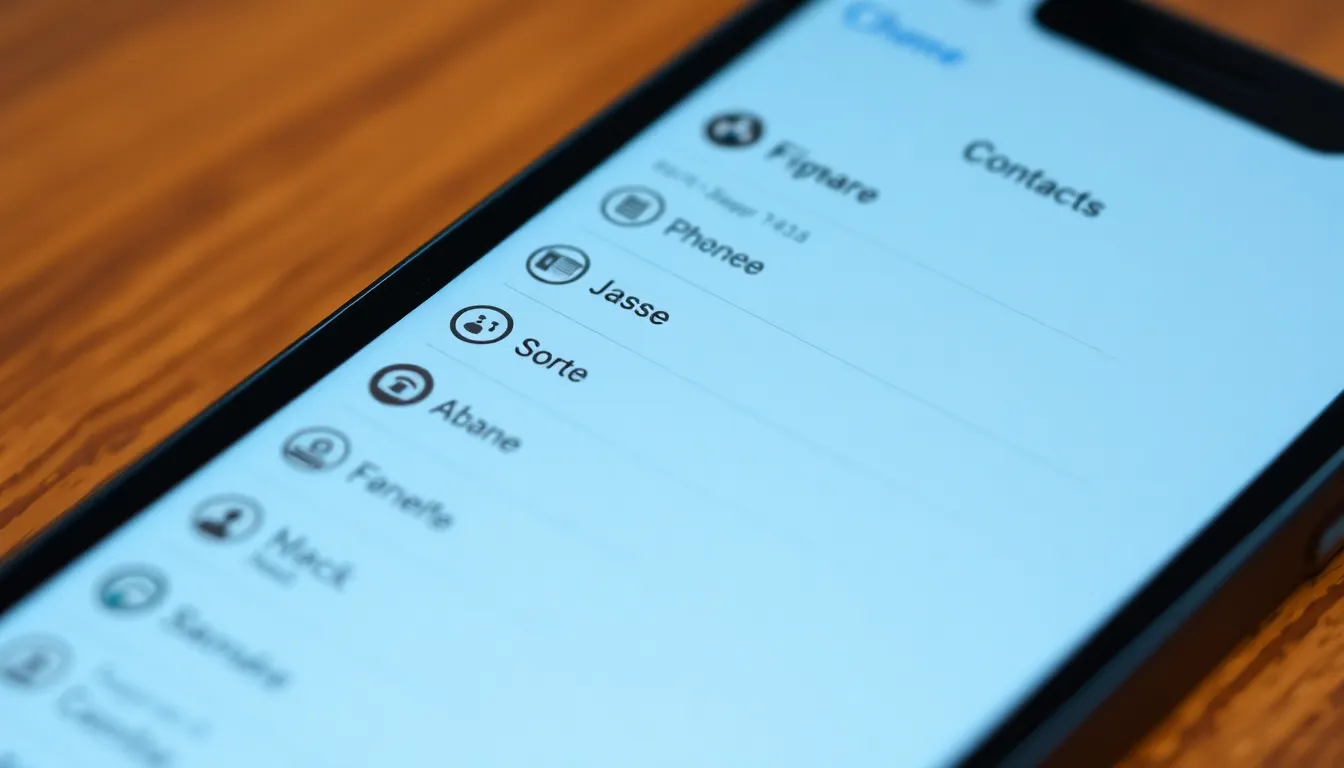Keeping contacts organized on an iPhone can feel like herding cats. With names scattered like confetti, finding that one friend who always borrows your favorite sweater becomes a treasure hunt. But fear not! Alphabetizing those contacts isn’t just a neat freak’s dream; it’s a game changer for anyone tired of scrolling endlessly through a chaotic list.
Table of Contents
ToggleUnderstanding Contacts on iPhone
Managing contacts on an iPhone significantly improves user experience. Alphabetizing contacts simplifies navigation and saves time when searching for a specific name.
The Importance of Organizing Contacts
Organizing contacts greatly enhances efficiency. Users find it easier to locate friends, family, and important business contacts. A well-structured list prevents frustration associated with endless scrolling. Streamlined access to contacts fosters better communication. Managing a neat array of names contributes to a more productive daily routine.
Overview of Contact Management Features
Contact management features on iPhone provide various tools for organization. Users can sort contacts by first or last names, allowing for personalized arrangements. Grouping functionalities enable easy categorization of contacts, such as work, family, or friends. Additionally, contact sharing through AirDrop facilitates quick exchanges. Importing and exporting contacts keeps the list updated across devices, ensuring seamless access. Regularly syncing with iCloud ensures contacts remain backed up and accessible.
Steps to Alphabetize Contacts on iPhone

Alphabetizing contacts streamlines the process of finding names quickly. The following steps detail how to access the necessary features.
Accessing the Contacts App
To begin, tap on the Contacts app icon on your iPhone’s home screen. This app may also be accessed through the Phone app by selecting the Contacts tab. Look for the search bar at the top to facilitate searching for specific contacts. Swiping down reveals a scrolling list of all entries, enabling easy navigation through available contacts. Find the desired contact more efficiently using this approach.
Sorting Options in Contacts
Contacts on the iPhone can be sorted either by first name or last name, depending on user preferences. To adjust these settings, navigate to Settings and select Contacts. Tap on Sort Order, which provides options to sort by first or last names. Furthermore, another preference available is Display Order, which determines how names appear. Make your selections based on personal organization styles to enhance the effectiveness of your contact list. By employing these sorting options, users can achieve a more orderly and accessible contact directory.
Changing Contact Sort Order
Changing the sort order of contacts enhances organization on an iPhone. Users can customize settings to match personal preferences for quicker access.
Adjusting Sort Settings
Adjust sort settings by navigating to the Settings app. Tap on Contacts to access various management options. Under “Sort Order,” choose either First, Last or Last, First to determine how names appear. This feature allows for personalized organization that simplifies contact retrieval. After making the selection, changes take effect immediately, ensuring a seamless user experience.
Managing Display Order
Managing display order enhances visibility of contacts at a glance. Users can select “Display Order” within the Contacts settings. Options include First, Last or Last, First for customization. Choosing a format that complements individual habits can streamline navigation. The adjusted display order enables efficient identification of contacts, improving daily interactions and minimizing time spent searching.
Tips for Maintaining an Organized Contact List
Maintaining an organized contact list on an iPhone requires consistent attention. Users should focus on specific strategies to enhance contact management.
Regularly Updating Contacts
Updating contacts regularly keeps the list relevant and accurate. Users benefit from removing duplicates or outdated entries to streamline their directories. Adding new contacts promptly also ensures important numbers are easily accessible. It’s wise to take a moment after every significant change, like getting a new phone number or email address, to update existing entries. This habit reduces frustration during searches and maintains clarity. Deleting old contacts that are no longer needed prevents clutter, contributing to a neat contact list.
Utilizing Groups for Better Organization
Groups provide an effective way to categorize contacts logically. Users can create groups based on relationships, such as family, friends, or work colleagues. Organizing contacts in this manner improves search efficiency. Setting up these categories also simplifies sharing information with specific groups. iPhone users can quickly message or email a whole group rather than individual contacts, saving time. Regularly reviewing group memberships ensures they remain relevant and useful for daily interactions.
Alphabetizing contacts on an iPhone is a practical step toward better organization and efficiency. By implementing the sorting options available in the Contacts app users can streamline their contact list and enhance their overall experience. Regularly updating and managing contacts ensures the list remains relevant and accessible.
Utilizing groups for categorization further simplifies communication and navigation. With these strategies in place users can enjoy a more orderly contact directory that saves time and reduces frustration. Embracing these practices not only improves daily interactions but also fosters stronger connections with friends, family, and colleagues.




